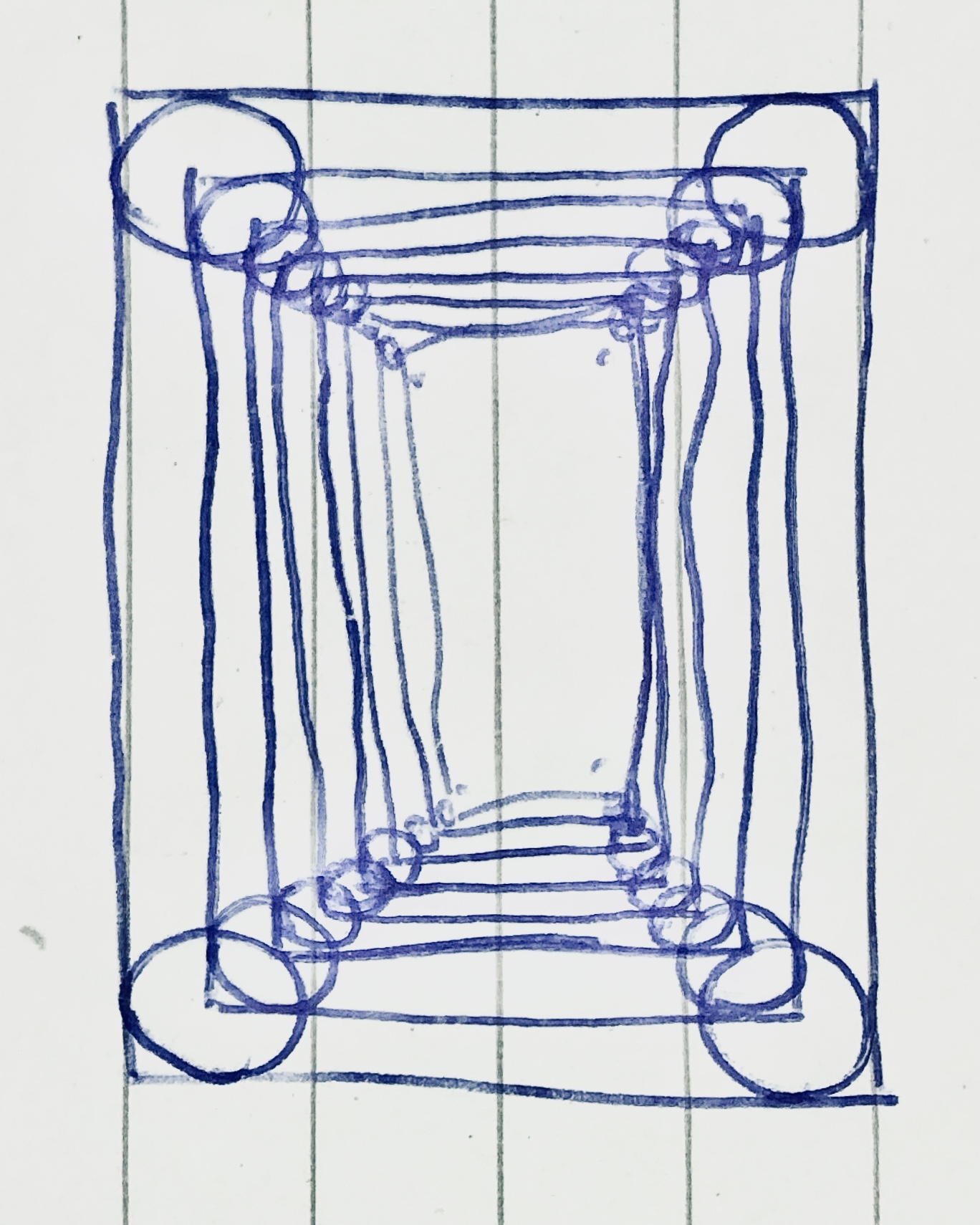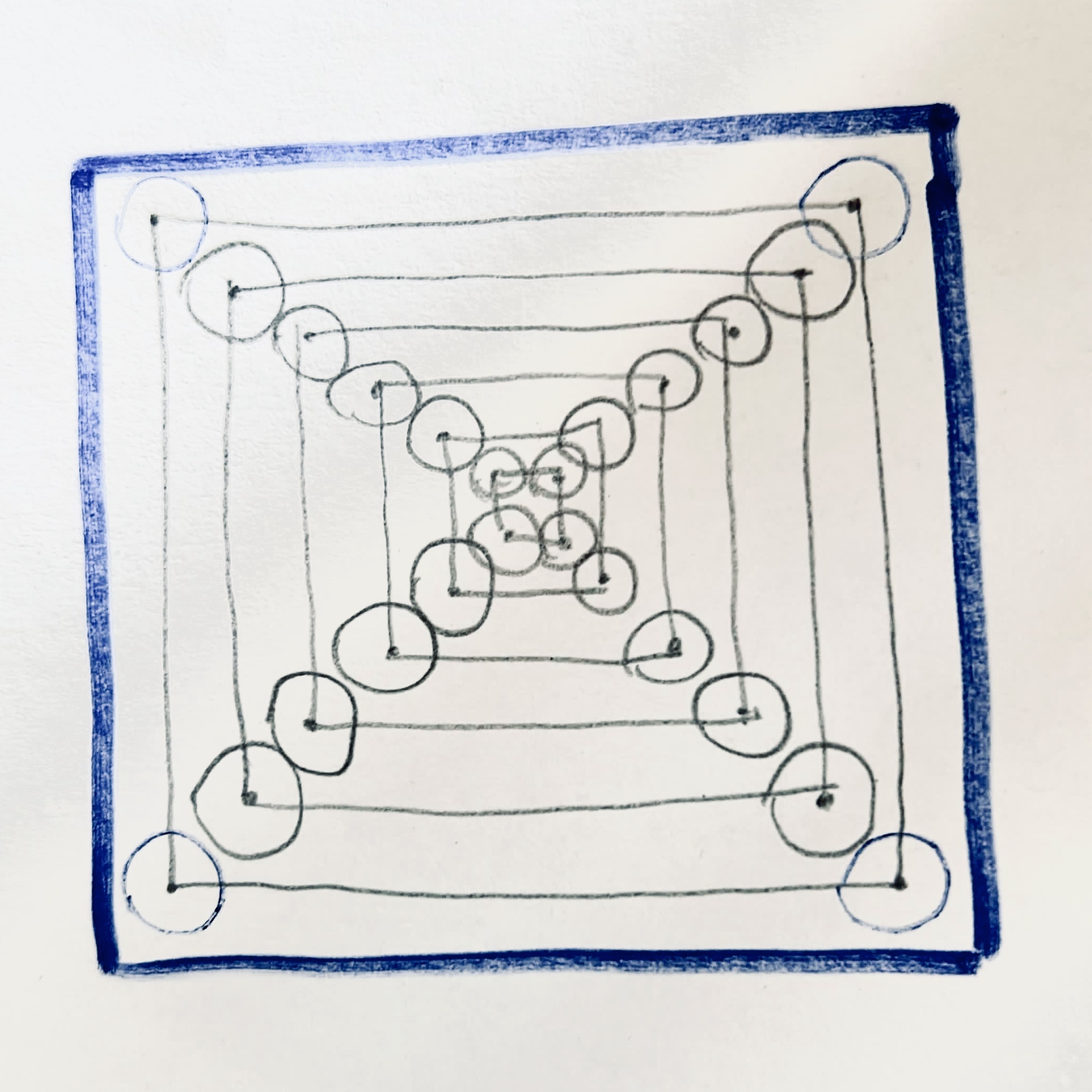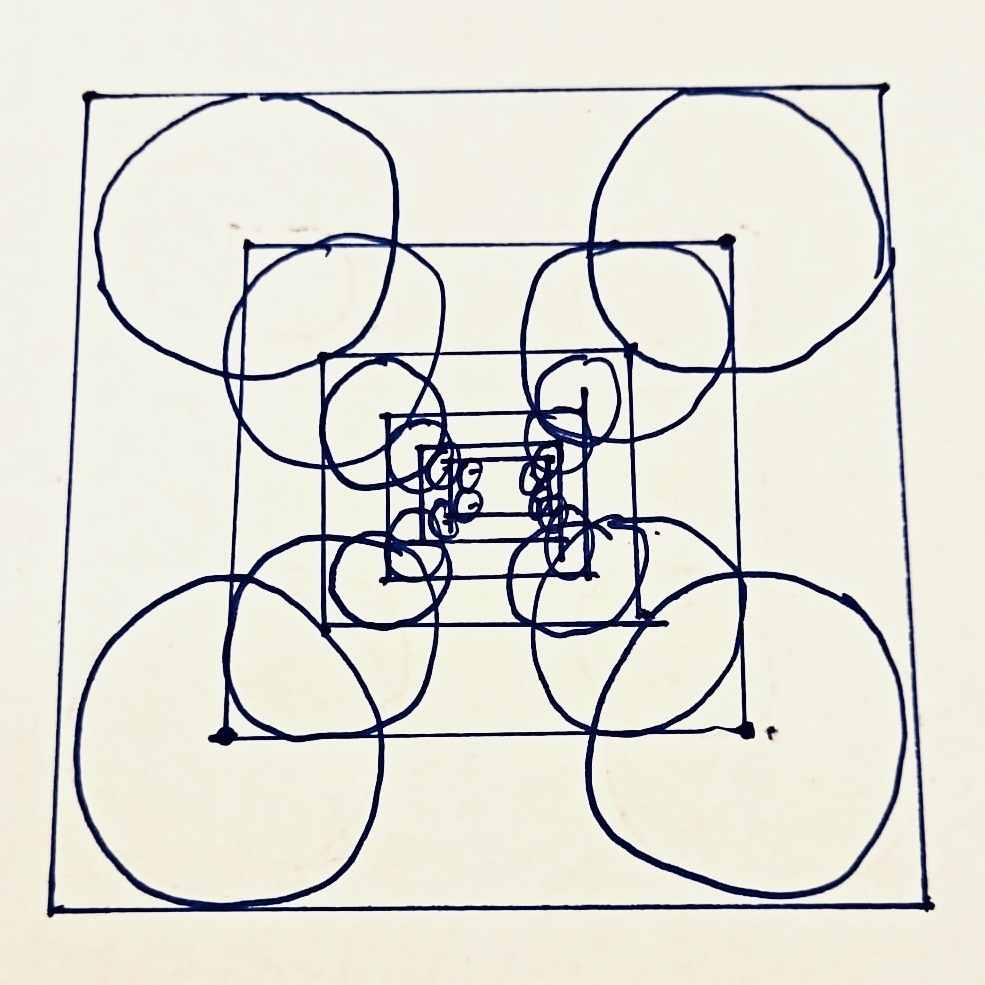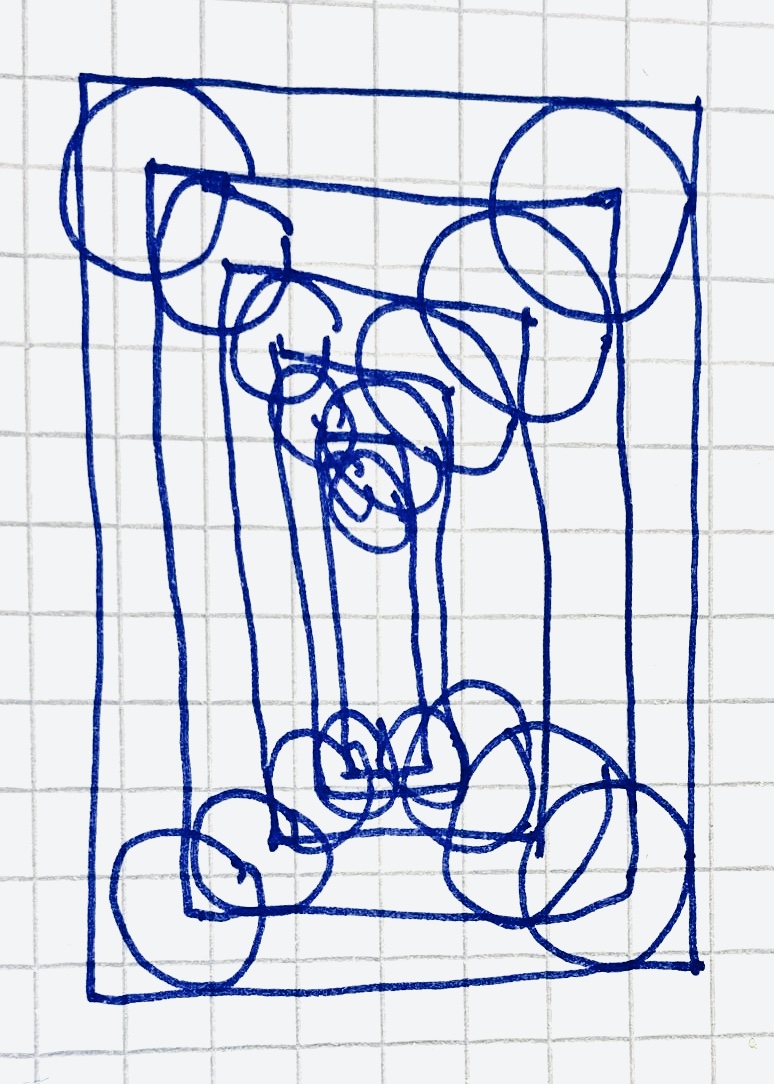The Project
Phase 1A circle of varying size in each corner of a square. The circles are connected by a long line.
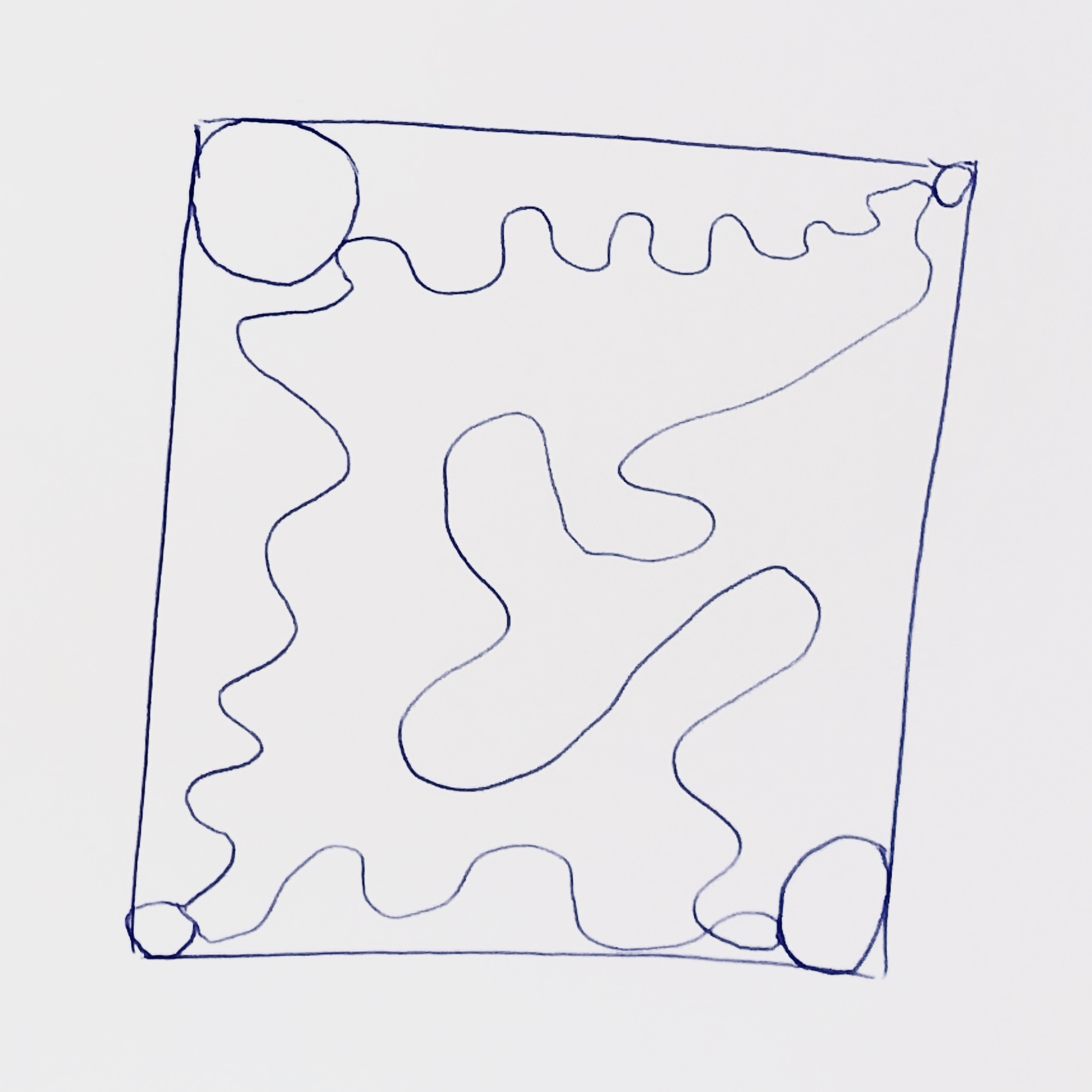
A circle of varying size in each corner of a four-sided square. The circles are connected by a smaller four-sided square whose corners lie within the centres of the circles.
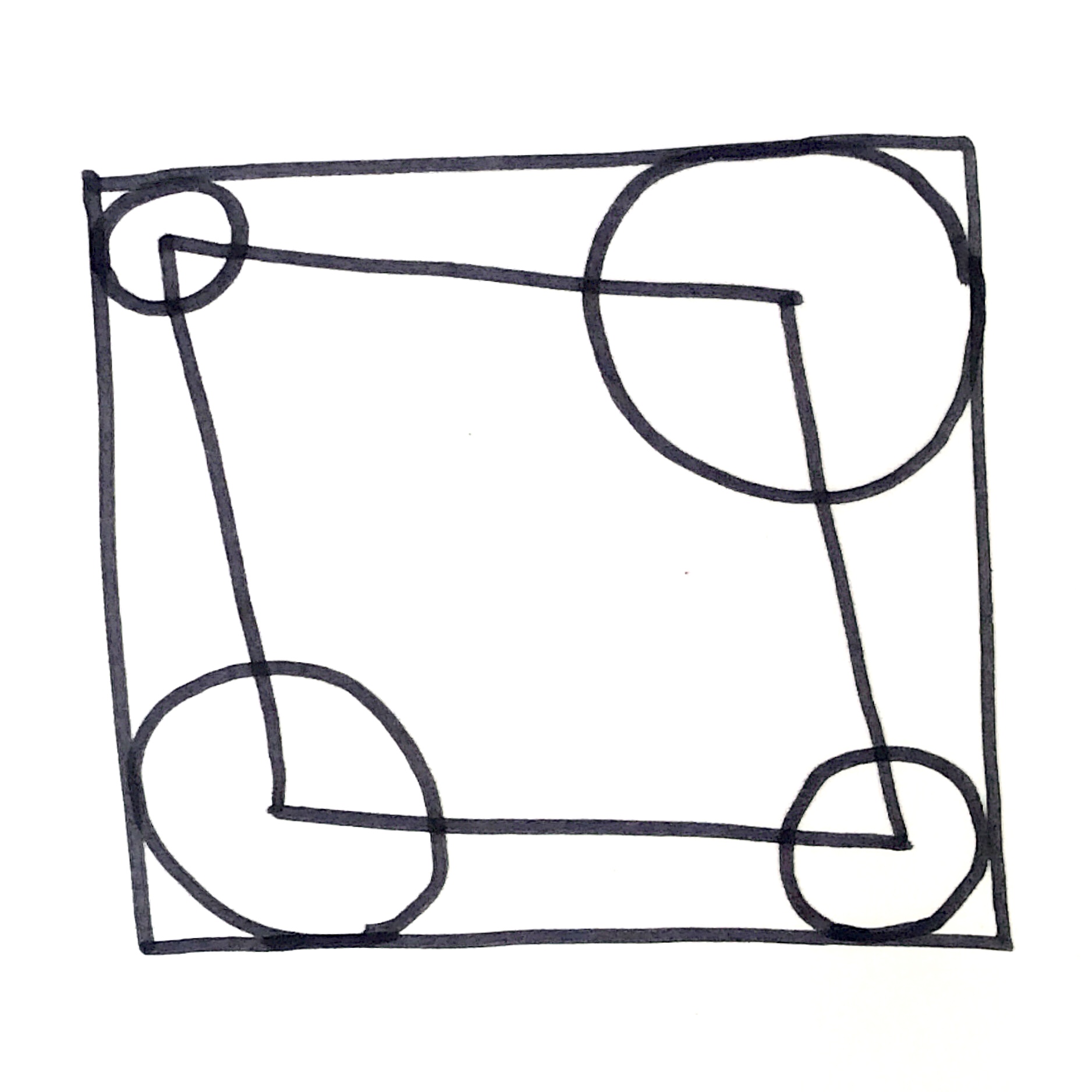
A circle of varying size in each corner of a rectangle. The circles are connected by a smaller rectangle whose corners lie exactly within the centres of the circles.
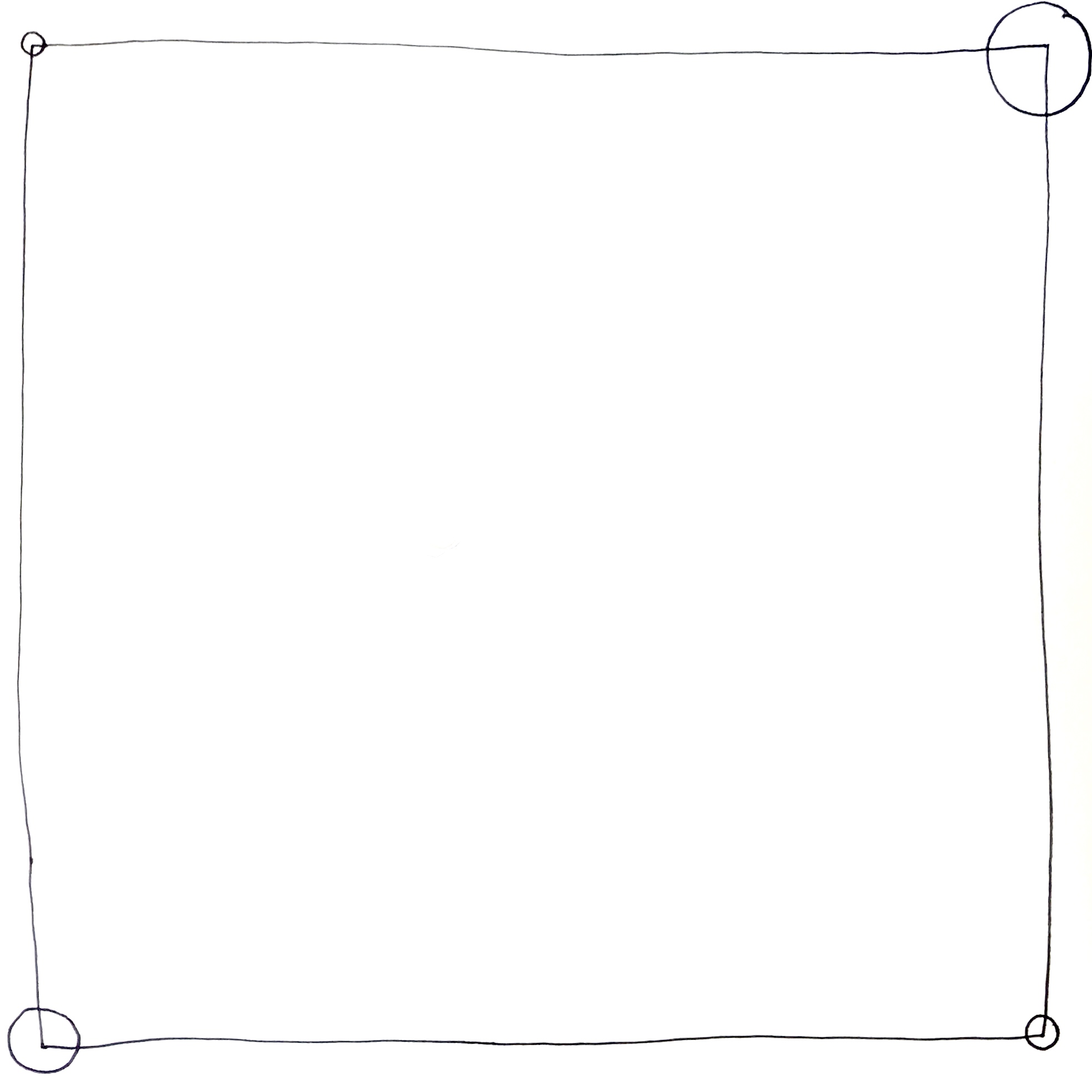
A circle of the same size in each corner of a rectangle. The circles are connected by a smaller rectangle whose corners are exactly inside the centres of the circles.
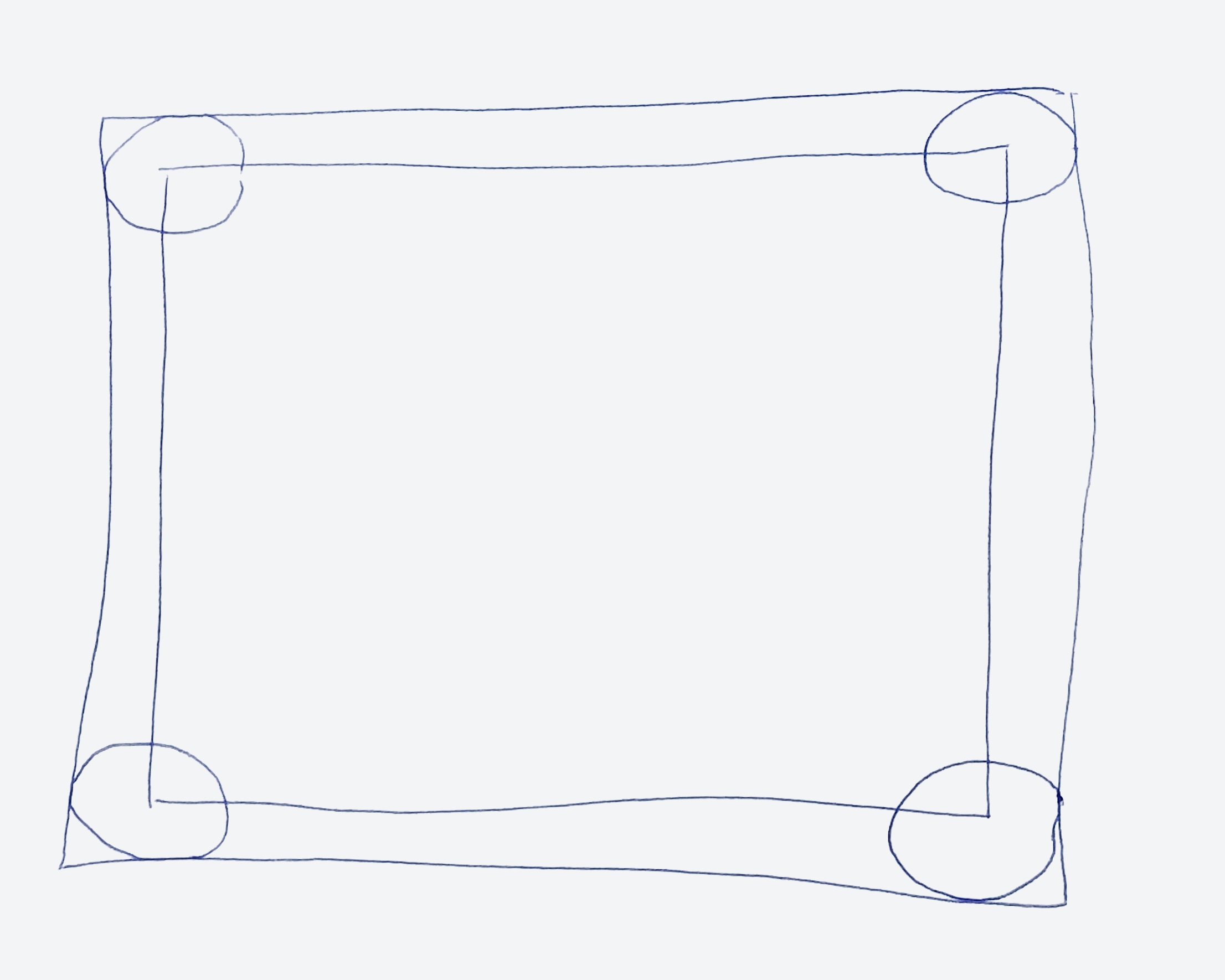
A circle of the same size in each corner of a rectangle. The circles are connected by a smaller rectangle whose corners are exactly inside the centres of the circles. Repeat the same principle, getting smaller and smaller, until there is no more space.
